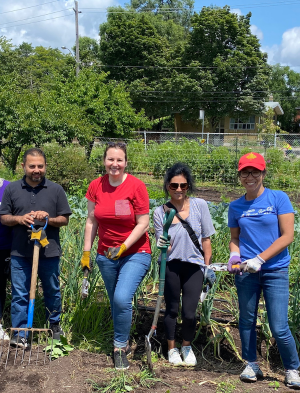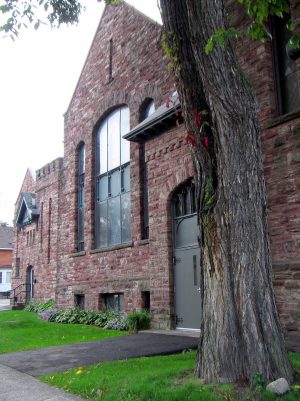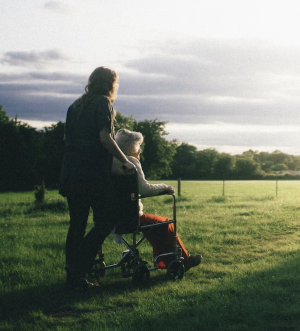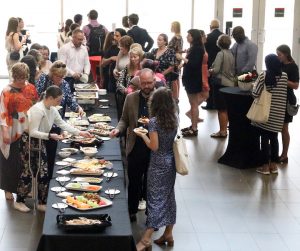 By Don McRae.
By Don McRae.
One of the many effects of the pandemic was a major shutdown of many forms of face-to-face volunteering. Meetings stopped, museums closed, theatres were dark, sports venues were empty and choirs lost their voice. And this is important, because 58% of charities across Canada are solely volunteer run, according to Canadahelps’ Giving Report 2023. While virtual volunteering tried to fill the gap and the easing of restrictions has brought back many types of person-to-person volunteering, the number of volunteers and hours isn’t back to pre-pandemic levels. (This story is part of our “Charity Trends and Revocations” series.)

Don McRae studies trends in the charitable sector by analyzing the revocations of charitable status that are published in the “Canada Gazette.” Other articles in his “Charity Trends and Revocations” series are found here: https://carleton.ca/panl/don-mcraes-charity-revocations-series.
But something else is changing. Our traditional model of volunteering was hit by a major shock with the pandemic, one that stressed and, in some cases, broke our ways of helping each other. As a society, we need to find ways to build back better. But first, we need to recognize that the pandemic sped up changes that were already occurring in volunteering and philanthropy; specifically, the loss or erosion of a number of volunteer hubs.
Many of the organizations that are incubators for volunteering or that facilitate and provide resources toward that end are in trouble. Data on the registration of new charities and the revocation of older, mature groups suggests we’re losing parts of our system of volunteer support with little else but computer screens to replace the assistance and personal contact our society has come to rely on.

Read Don McRae’s update to this article from April 2024: “Four Trends in the Creation & Shutdown of Registered Charities in Canada in 2023.”
We’re losing the groups that bring people together at the local level and that provide space, tools and money to support community causes. We’re losing churches, service clubs, auxiliaries and other groups that provide the structure for volunteering at the local, regional and national levels.
Religious institutions are closing down
In 2019, the National Trust of Canada predicted that we’ll lose 9,000 places of worship the next ten years. And it’s clear, from the revocation data on charities, that the bulk of these will be mainstream Christian churches. With the exception of Baha’is Assemblies, which are usually too small to have their own building, the other major religions in Canada are creating more charities than they’re losing.
The information from the Canadian government’s charity database shows this trend. Since 2000, 7,171 Christian charities have been registered and 8,036 Christian charities have been revoked for a difference of 865 charities. The article Church Closures and the Loss of Community Social Capital gets into more detail.
Churches are neighbourhood organizations. They provide funds for local groups, set up soup kitchens and foodbanks, run thrift shops, provide opportunities for youth, like Scouts and Guides, and sponsor immigrant and refugee families
They advocate for their neighbourhoods and communities. Most churches have kitchens, meeting rooms, auditoria, gyms and stages. But it’s not only the loss of one congregation and its volunteer habitat that’s at stake.

To read all of Don McRae’s stories in our “Charity Trends and Revocations” series, click the above image.
In 2020, a report entitled No Space for Community looked at what would happen to Canadian communities when faith buildings close down and are no longer available to community groups and nonprofits. Thirty-two percent of respondents said that they paid nothing for their spaces, and 27% said they had other arrangements, including bartering or exchange of services. Other groups said that they paid minimal amounts. The organizations using these spaces were arts and culture, recreation and sports, social clubs, education and research, food security and daycares. The convenience of the location is a major factor for these groups. The loss of this community infrastructure and social capital is clear. But they’re not the only change in the charitable sector.
Volunteer-supporting service clubs are disappearing

A quick scan of budgets of 46 Lions Clubs indicated that more revocations are coming. Fourteen of them (30%) had annual revenues under $1,000, and 19 of them (41%) had revenues under $5,000.
Service clubs bring people together to volunteer and raise funds to improve the health and wellbeing of their communities. These clubs undertake a number of projects to meet local needs. They support school breakfast programs, youth activities, medical research and equipment, seniors, scholarships and bursaries, summer camps, sports, recreation, music festivals and more.
The charity database shows that there are 440 Rotary, Lions, Kiwanis and Optimist Clubs charities in Canada. It also shows that another 283 have been revoked. On the face of it, these numbers look good. If we look at the number of new charities and revoked charities since 2000, the picture changes. There were 88 new club charities since 2000. In the same time period, 199 of these clubs were revoked.
Auxiliaries charities are attracting fewer volunteers
 “Auxiliaries” are often volunteers who assist health care workers and raise funds for hospitals, seniors’ homes and other areas in health. Hospitals were essential during the pandemic, but not all of their functions continued. Those people who did the work for the auxiliaries charities stayed at home. Gift shop volunteers and people who provided information and helped out with fundraising — or who delivered books, or who undertook the little acts of caring that improve patients’ experiences — were gone.
“Auxiliaries” are often volunteers who assist health care workers and raise funds for hospitals, seniors’ homes and other areas in health. Hospitals were essential during the pandemic, but not all of their functions continued. Those people who did the work for the auxiliaries charities stayed at home. Gift shop volunteers and people who provided information and helped out with fundraising — or who delivered books, or who undertook the little acts of caring that improve patients’ experiences — were gone.
There are 357 auxiliaries registered as charities and another 238 of these groups that have been revoked. Again, if one looks at the numbers since 2000, the picture changes. There have been 39 new charitable auxiliaries since 2000, but 163 of these groups have been revoked since then. The pandemic hit these groups hard and several have lost their charitable status, in part because their members are older and still have health and safety concerns about face-to-face volunteering.
Community resource groups are decreasing
 These are the two charitable categories that capture groups that undertake activities that affect local communities. Community resource organizations include daycares. community resource centres, women’s groups, friendship centres and immigrant settlement, to name a few. Public amenities groups include libraries, museums, playgrounds, historical societies, recreation centres and cultural associations.
These are the two charitable categories that capture groups that undertake activities that affect local communities. Community resource organizations include daycares. community resource centres, women’s groups, friendship centres and immigrant settlement, to name a few. Public amenities groups include libraries, museums, playgrounds, historical societies, recreation centres and cultural associations.
Because they’re community-based, the pandemic restrictions hit these organizations particularly hard. There were 205 community resource groups registered since January 1, 2020. Over that same time period, 294 groups have been revoked for a loss of 89 groups. Similarly, 208 public amenities groups were registered since January 2020 and 292 have been revoked, for a loss of 84 groups.
A sampling of the revocations data shows the loss of community information groups, daycares, seniors’ groups, heritage and historical societies, local recreation groups, family services and museum support groups. A good number of these groups were in smaller or rural communities where they may have been the only provider of the service or activity.
Volunteer centres and bureaus face shrinking budgets
 On the whole, volunteer centres have a precarious funding model. With the exception of some government support in Quebec and New Brunswick, there’s no concerted government support for these groups in Canada. In a survey of 61 volunteer centres with charitable status, it was found that 30 centres had a decrease in funding in the past year, five maintained their budget, and 24 had budget increases. The bad news was that two of the centres closed down since the previous survey. Thirty-two of these groups have been revoked, with 25 of the revocations occurring since 2000. Twelve volunteer centres have been registered since 2000.
On the whole, volunteer centres have a precarious funding model. With the exception of some government support in Quebec and New Brunswick, there’s no concerted government support for these groups in Canada. In a survey of 61 volunteer centres with charitable status, it was found that 30 centres had a decrease in funding in the past year, five maintained their budget, and 24 had budget increases. The bad news was that two of the centres closed down since the previous survey. Thirty-two of these groups have been revoked, with 25 of the revocations occurring since 2000. Twelve volunteer centres have been registered since 2000.
Volunteer centres not only provide a wide range of volunteer opportunities, they also target their placements. They help students to find interesting positions so they not only meet their school volunteering hours, but also find possible career choices. They help newcomers by giving them the chance to learn language and social skills while making a contribution to their new community. They provide seniors with specific supports reducing their social isolation and giving them the sense of inclusion and fulfillment that volunteering provides.
 This is not new; charitable organizations have a life cycle. They form to fill a community need; they meet it and wind down operations and close down. Sometimes, as with community information centres, much of their business can now by met by a quick internet search. The problem is that the information part has been resolved for consumers, but the community part of this equation is lost.
This is not new; charitable organizations have a life cycle. They form to fill a community need; they meet it and wind down operations and close down. Sometimes, as with community information centres, much of their business can now by met by a quick internet search. The problem is that the information part has been resolved for consumers, but the community part of this equation is lost.
Many of these groups either don’t have or can’t initiate succession plans to rejuvenate their organizations. In their last Public Information Returns, volunteers from churches, auxiliaries and similar groups have mentioned that the next generation of people were not taking over. Several groups tried to recruit new people to carry on, but the efforts were too late and did not bear fruit.
The point is that a number of the key organizational building blocks of volunteering in our society are under stress or disappearing, and we have not created the organizational structures to replace them. Our model is changing and the pandemic has only sped up this process of loss.
The way forward
There are three things that we can do to address this: research to understand the changes; recognition of the need to act; and the provision of sustainable funding to voluntary organizations.
The pandemic has shifted the ways in which we volunteer. We know anecdotally and from a few limited surveys that volunteering rates have gone down. There has been dislocation. Volunteer managers were redeployed or let go during the pandemic. We know that virtual volunteering has found a place in our support to communities, but we have little idea of its effectiveness, especially over the long term.
We need comprehensive research to show what has changed and what has remained the same, with an emphasis on face-to-face volunteering, especially for older volunteers. Then we need to re-tool and carry out a National Action Strategy on Volunteerism, according to Volunteer Canada, to support or recreate the role these groups play in community building.
But the key to success rests on action. Funders, from foundations to corporations to government and charities, need to recognize the loss that’s occurring and then be willing to address this issue together. Hollowing out our downtown cores or rural centres is a straightforward loss of the community. It can only lead to mounting social costs over the long run.
 For example, churches are closing down in rural, urban and suburban parts of Canada. In some cases, the cause is a declining number of congregants paired with an increasingly old and expensive building. If the building is still in good shape, it can and has been repurposed as a community hub, giving groups a place to meet and undertake activities. There have been recent successes in Edmonton, Toronto and Ottawa toward that end. It has taken a fair amount of good will and a coalition of funders, especially from the former owners, but it has worked. We need more innovation like this to move on.
For example, churches are closing down in rural, urban and suburban parts of Canada. In some cases, the cause is a declining number of congregants paired with an increasingly old and expensive building. If the building is still in good shape, it can and has been repurposed as a community hub, giving groups a place to meet and undertake activities. There have been recent successes in Edmonton, Toronto and Ottawa toward that end. It has taken a fair amount of good will and a coalition of funders, especially from the former owners, but it has worked. We need more innovation like this to move on.
Finally, support from funders must recognize operational needs. Too many groups depend on a fragile patchwork of funding sources. A number of recent revocations have shown mature charity groups failing after decades of cobbling budgets together when one partner changed their funding priorities.
Most voluntary groups, even if they respond to the specific priorities of funders, don’t receive the core support necessary to fund full operations. They receive support for expenses related to projects and rarely for the full operational infrastructure of the group. The funding support doesn’t support the policy development, research, evaluation and expertise that make voluntary groups the ideal candidates to build social capital.
The ways in which we volunteer have changed because our society is transforming. Older models aren’t as effective as they used to be. Some models were shaken or even broken by the pandemic. We see this in the revocation of charities that supported communities. We know what’s happening; we need the will to address it.
Read Don McRae’s update regarding volunteer-run and other charities: “Four Trends in the Creation & Shutdown of Registered Charities in Canada in 2023” (April 2024).
Don McRae is an old, left-handed, male, Scottish agnostic with Wesleyan-Methodist grandparents (hence the agnosticism) — and is a Board Member of Volunteer Canada. He’s also a former federal public servant and a longstanding volunteer, consultant, writer and researcher on the charitable sector. He can be found on LinkedIn. Photos are courtesy of Karl Fredrickson, Sandro Schuh and Welcome Hall Mission.
Sign up for PANL Perspectives' free monthly newsletter
Tuesday, August 22, 2023 in Don McRae, For homepage, News & Events, Trends
Share: Twitter, Facebook



